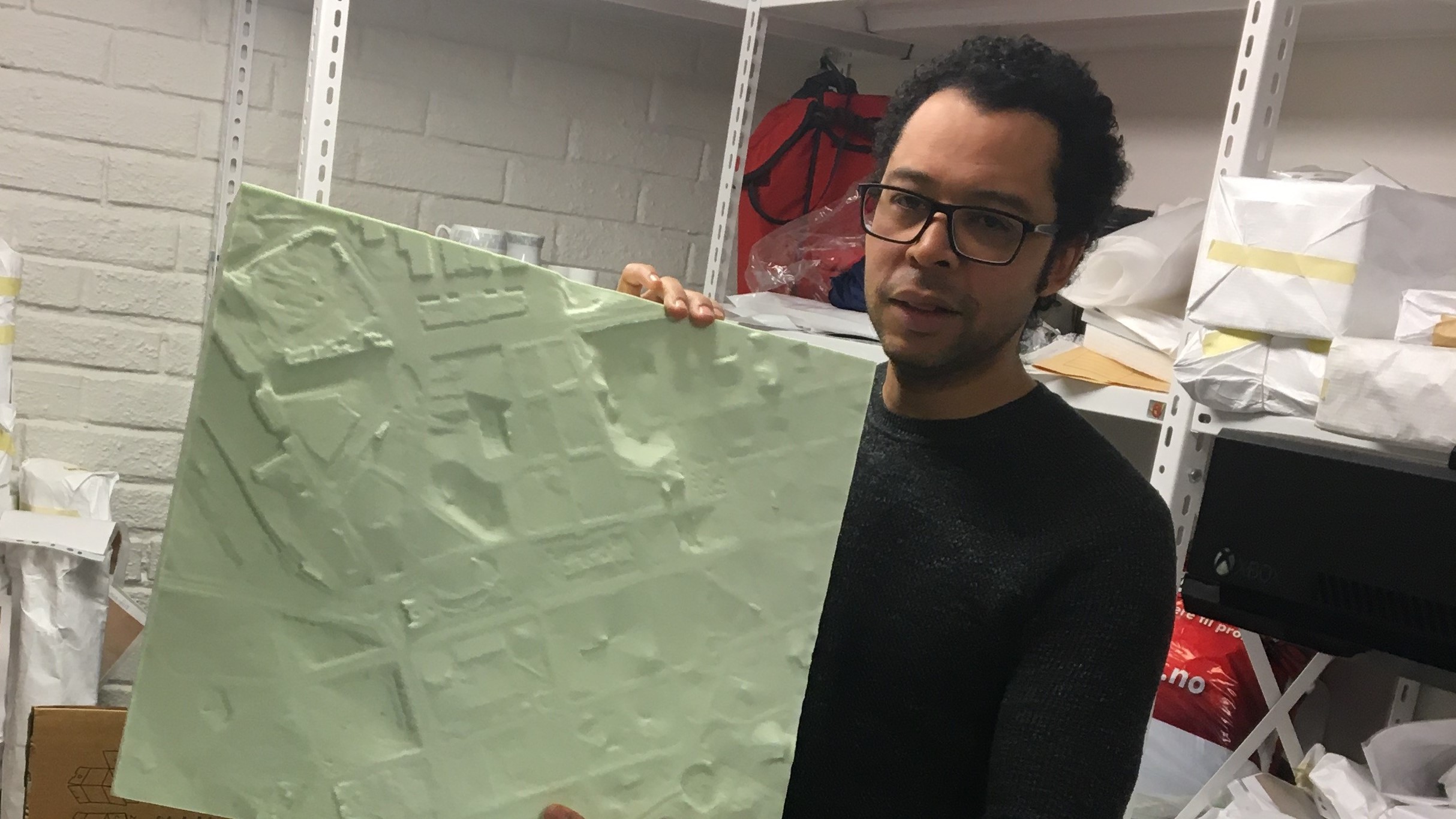Move beyond silo thinking
We need to overcome a silo thinking culture among data owners, producers and ICT managers to release the full potential of use of ICT for urban sustainability, says Rengifo Zenon Ortega Mora at NVE.

Photo: Rengifo demonstrated a 3D model and the tangible user interface he works with when we met at his work place.
In our ongoing series of stakeholder interviews, we've asked Rengifo Zenon Ortega Mora from the Norwegian Water Resources and Energy Directorate (NVE) about opportunities and considerations relating to the use of Information Communication Technology (ICT) and crowdsourcing in the context of urban sustainability.
Rengifo is a senior engineer working at the GIS Section at the Hydrological department at NVE. He works with GIS, hydrological modelling and use tangible user interfaces (TUIs) to simulate surface water flow in a urban environment.
1. In the last decades, new ways of research have been implemented, and they are referred to as crowdsourcing, citizen participation, citizen science, public participation or volunteered information. Where do you see the biggest advantage of such approaches?
It can give readily availability of data over large areas at low cost and with less statistical skewness, when compared with other data sources e.g. insurance companies, in the case of Oslo.
2. Where do you see the biggest challenge of such approaches?
When collecting data through citizen science projects there are in particular 2 challenges to be considered:
- Motivation: how do I get people to create content? There are plenty of tools and web apps available on the web created with this purpose in mind, but most of them struggle with the same question.
- Relative accuracy: When using GPS to register location based data (LBD), it is important to have certain level of accuracy i.e. relative accuracy, or a way to validate the location of the collected data, if this data is going to have any practical use i.e shaping the urban environment.
3.The vision of smart cities is nowadays a well-established path based on integrating multiple ICTs. Where do you see the greatest potential (if any) for the use and integration of multiples ICTs for urban sustainability?
Integration of ICT platforms to comply with the smart cities vision, will presumably have a positive overall effect on the urban sustainability, but at this early stage it is difficult to quantify it.
4. What are the biggest challenges with digitalisation and the integration of multiples ICTs for urban sustainability?
Some of the main challenges I see for digitalisation and integration of ICT across organisations are:
- Silo thinking culture among data owners, producers and ICT managers
- Too rigid ICT security routines
- Vendor’s lock-in
5. What does the term social responsible tell you? Do you see it compatible with crowdsourcing and/or citizen participation in research?
Well, not necessary.
It depends on the field you decide to collect the information about. Is this information contributing to the well-being of a population e.g. becoming more aware of urban prone flood areas in the city of Oslo, then my answer is yes.
However, you still can use crowdsourcing for collecting less ethical sounded information about an specific topic. Then my answer is no.
Integration of ICT platforms to comply with the smart cities vision, will presumably have a positive overall effect on the urban sustainability, but at this early stage it is difficult to quantify it.
--------------------------------------------------------
Do you have a question or something to add? Leave a comment below.
This blog post is part of a series where we interview stakeholders about ICT, crowdsourcing, research and urban sustainability.
You can take part in the dialogue by using the hashtag #crowds4research
iResponse on twitter: @iresponse_rri